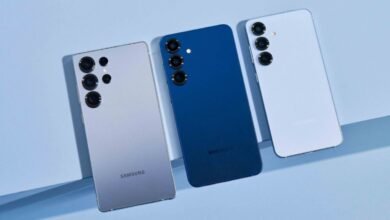Samsung Galaxy S26 Ultra Battery Issues Persist

▼ Summary
– The Galaxy S26 Ultra will retain slow 45W wired charging, lagging behind Chinese phones offering up to 120W.
– Samsung, Apple, and Google are slow to adopt better battery tech in the U.S., with Apple focusing on software optimization instead.
– The Galaxy S26 Ultra is expected to have a modest 5,000 mAh battery, with any increase likely staying below 5,400 mAh.
– Samsung’s cautious approach to battery innovation contrasts with Chinese brands using denser batteries up to 7,000 mAh.
– A Samsung executive defended the small 3,900 mAh battery in a new model, indicating no major battery improvements are planned.
Samsung’s upcoming Galaxy S26 Ultra appears set to continue the company’s conservative approach to battery technology, according to industry insiders. Early reports suggest the flagship device will maintain the same 5,000 mAh capacity as its predecessors, with any potential increase unlikely to exceed 5,400 mAh. This stands in stark contrast to competitors, particularly Chinese manufacturers pushing boundaries with capacities reaching 7,000 mAh through advanced dense battery designs.
Charging speeds also show little progress, with the S26 Ultra expected to retain 45W wired charging—a specification that now lags behind market leaders offering 120W fast charging solutions. This technological gap becomes more apparent when comparing recent releases like Xiaomi and Oppo devices that deliver full charges in under 30 minutes.
The situation reflects a broader industry divide. While Asian manufacturers aggressively pursue battery innovation, Western brands including Samsung, Apple, and Google appear content with incremental improvements. Apple’s rumored focus on software-based battery optimization through its upcoming Apple Intelligence system mirrors Samsung’s cautious hardware strategy—one that industry analysts attribute to lingering trauma from the Galaxy Note 7 recall.
This conservative philosophy extends across Samsung’s product line. The newly announced Galaxy S25 Edge reportedly ships with a modest 3,900 mAh battery, while leaks suggest the Galaxy Z Fold 7 may debut with just 4,400 mAh capacity. Such specifications raise questions about whether premium pricing aligns with consumer expectations for all-day endurance, especially given the power demands of modern displays and processors.
Market observers note that while safety remains paramount after past incidents, Samsung’s risk-averse battery strategy risks alienating power users. With competitors demonstrating that large-capacity batteries can be implemented safely, the pressure mounts for the Korean giant to accelerate its development roadmap. Until then, customers prioritizing battery life may need to look beyond Samsung’s flagship offerings for truly groundbreaking endurance solutions.
(Source: Phone Arena)





